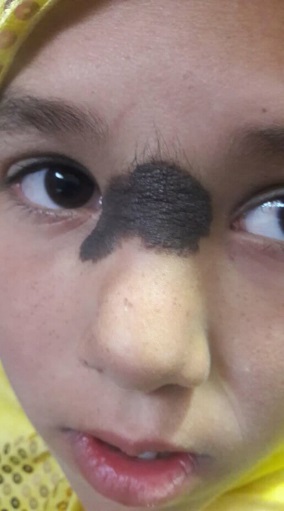Paediatric melanoma
Congenital Melanocytic Nevus (CMN)
Congenital melanocytic nevus (CMN) is a visible pigmented (melanocytic) proliferation in the skin that is present at birth. CMN results from a failure in the development of the pigment cell (melanocyte) precursors in the embryo (two first months of a foetus) and composed of an abnormal mixture of skin elements. The later this morphological error is produced the smaller the lesion (nevus) will be.

CMN is normally presented as a brown lesion with well-defined borders. Areas of these melanocytic proliferations cover surfaces at the base of the epidermis ranging from a few millimetres in diameter to large sections of the body. In the larger forms, the CMN (single or multiple) also extends vertically into the deeper dermis and more rarely, into the hypodermis or even subcutaneous tissues. The most superficial component of the CMN is the most highly pigmented, conferring brown-to-black shades to the overlying epidermis.
CMN can be light brown to black patches or plaques, can present in variable ways, and cover nearly any size surface area, affecting the torso most frequently, but can affect any part of the body.
CMN is also related to the appearance of other small pigmented lesions which are scattered throughout the body. However, the most serious complication CMN is neurocutaneous melanosis, a very rare syndrome, characterized by the presence of melanocytic proliferation (benign or malignant) in the central nervous system. This syndrome has its origin in a single mutation in the NRAS gene mutation (Q61) in roughly 80% of the cases6. Also, another RAS gene, HRAS, has been involved in small single CMN development7,8.
Giant CMN (GCMN) is differentiated mainly by its larger size, the dissemination of nevus cells into the deeper layers of the skin (including subcutaneous tissues) and its varied architecture and morphology.
People with GCMN are at an increased risk of developing melanoma, also known as premature melanoma. This increased risk is explained because of the higher number of melanocytes in their organism and their different biological activity.